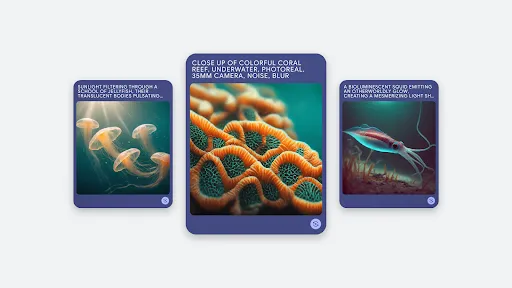New and better ways to create images with Imagen 2

Whether it’s to make music, get help with coding or create an image, task-based AI models like Lyria, Codey and Imagen are helping people bring creative ideas to life.
Since launching last year, our Imagen technology has helped people and businesses generate images using just a few words or phrases, directly in products. For example, you can envision what you’re searching for right in Search with Search Generative Experience (SGE) or create images directly in Google Slides and Meet with Duet AI in Workspace. Plus, developers and enterprises, like Canva and Snap, have used the Imagen API on Google Cloud Vertex AI to help millions of their users expand their creativity.
In December we introduced our updated Imagen 2 model, which delivers high-quality, photorealistic outputs. And starting today, Imagen 2 is powering new image generation functionalities on Bard and ImageFX.

More advanced image generation, powered by Google DeepMind
Imagen 2 is powered by Google DeepMind’s latest text-to-image advancements via a diffusion-based model. This update delivers our highest-quality images yet, as well as improvements in areas that text-to-image systems often struggle with, such as rendering realistic hands and human faces and keeping images free of distracting visual artifacts.
Imagen 2 has been trained on higher-quality, image-description pairings and generates more detailed images that are better aligned with the semantics of people’s language prompts. It’s more accurate than our previous system at processing details, and it’s more capable at capturing nuance — delivering more photorealistic images across a range of styles and use cases.
Imagen 2 generated this image with the prompt: “Small canvas oil painting of an orange on a chopping board, light is passing through orange segments, casting an orange light across part of the chopping board. There is a blue and white cloth in the background, caustics, bounce.”
Imagen 2 generated this image with the prompt: “Side profile fashion headshot of an old adult Asian male model silhouette apart from a red rim light on the right and a teal rim light on the left.”
Imagen 2 generated this image with the prompt: A jellyfish on a black background.”
Imagen 2 generated this image with the prompt: “Close-up shot of an elderly woman holding a dog in her arms walking on the streets of Prague; capture the fine details of the woman's weathered face, her gentle smile, and the dog's contented expression.”
Imagen 2 is now available across Bard, ImageFX, SGE and Vertex AI
Today we’re making Imagen 2 more widely available for users, creators and enterprises across our products, including Bard.
Bard helps you bring your ideas to life, whether you’re designing a brochure or want some images to go along with a blog post. With Imagen 2, Bard understands simple or complex prompts so that you can generate a range of high-quality images. Image generation in Bard is available today in most countries in English.
Animation showing Imagen 2’s capabilities in Bard.
Imagen 2 also now powers text-to-image capabilities in SGE, and enterprise developers can use Imagen 2 with Google Cloud's Vertex AI.
Two images demonstrating Imagen 2’s capabilities within Vertex AI. Prompts: “a tube of toothpaste with the words ‘CYMBAL’ written on it, on a bathroom counter, advertisement” and ”a woman brushing her teeth, smiling, happy, toothpaste advertisement.”

Finally, we’re releasing a new text-to-image experiment, ImageFX. Designed for experimentation and creativity, ImageFX lets you create images with a simple text prompt, then easily modify them with a new take on prompting using expressive chips. ImageFX is available in AI Test Kitchen, where you can explore and create with other generative AI experiments, like MusicFX and TextFX.
A sped up example of how to use ImageFX and modify a prompt with expressive chips.
Our responsible approach to building Imagen 2
As we improved Imagen 2’s ability to generate photorealistic images, we prioritized the model’s safety. We invested in the safety of training data from the outset and added technical guardrails to limit problematic outputs like violent, offensive, or sexually explicit content. Consistent with our AI principles, we also conducted extensive adversarial testing and red teaming to identify and mitigate potential harmful and problematic content. We’re also applying filters to avoid generating images of named people. We will continue investing in new techniques to improve the safety and privacy protections of our models.
All images generated with Imagen 2 in our consumer products will be marked by SynthID, a tool developed by Google DeepMind that adds a digital watermark directly into the pixels of images we generate. SynthID watermarks are imperceptible to the human eye but detectable for identification. With added insights in About this image, you’ll know if an image may have been generated with Google’s AI tools when you come across it in Search or Chrome.
An example of the “About this image” feature detailing if an image may have been generated with Google AI.

Read more about the technology behind Imagen 2 and its capabilities from Google DeepMind.








